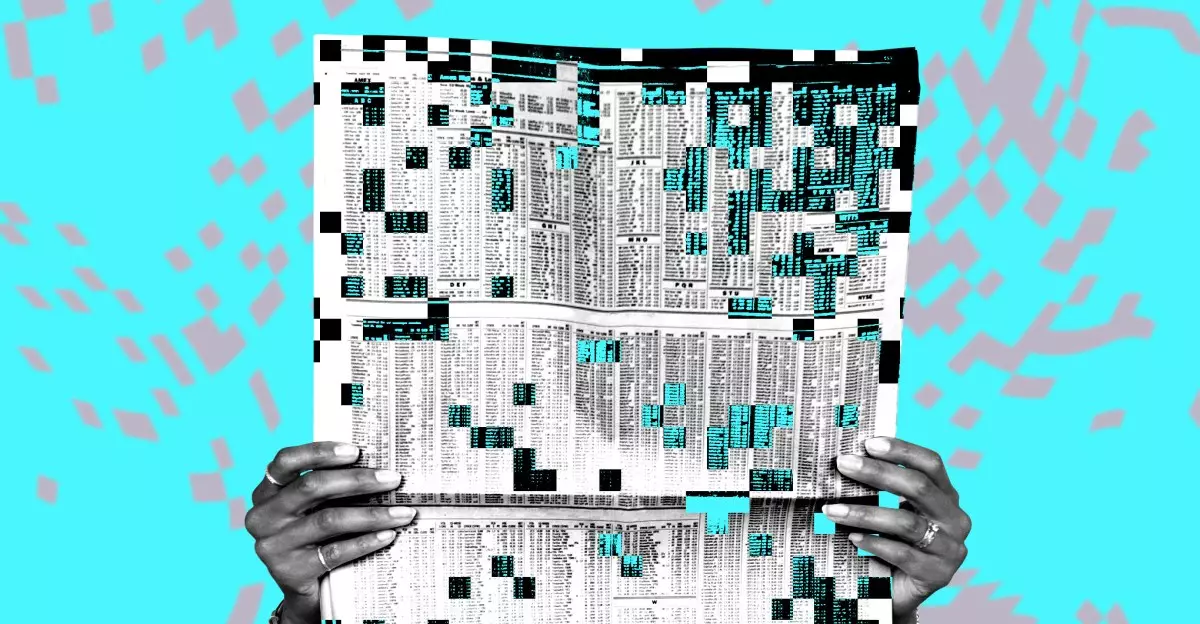In an era where content generation is increasingly dominated by artificial intelligence, the voices of creators are drowning in the cacophony of corporate interests. A powerful ad campaign launched by some of America’s most prominent publishers, including The New York Times and The Guardian, demands that Big Tech be held accountable for the content it exploits. This initiative, known as “Support Responsible AI,” is a clarion call for a fairer digital ecosystem that prioritizes the rights of creators—journalists, artists, and writers alike—over the unbridled ambitions of tech giants.
This campaign is not merely a plea; it’s a necessity in our hyper-connected world. The ad’s straightforward messages—phrases like “Stop AI Theft” and “AI Steals From You Too”—underscore a growing frustration within the industry. With AI technologies increasingly trained on copyrighted materials without consent, the integrity of creators is at stake. The urgency of this situation is encapsulated in Danielle Coffey’s assertion that the current model allows Big Tech to siphon off revenue from the very content that feeds its algorithms.
The Double-Edged Sword of Innovation
While AI offers unprecedented opportunities for innovation, it simultaneously poses significant risks for traditional content creators. The notion that advanced technologies can simply sweep aside intellectual property rights has prompted widespread concern. This isn’t an anti-AI movement; many creators utilize AI tools in innovative ways to enhance their work. However, the need for a balanced framework—which ensures that creators are justly compensated—has never been more pressing. The tech industry must recognize that a sustainable future lies in collaboration, not exploitation.
In calling for government intervention, the campaign articulates a vision for a regulated digital landscape where creators are not merely collateral damage in the quest for profit. The proposal to mandate attribution in AI-generated content would establish a baseline level of respect for the rights of creators. This is not just a question of financial compensation; it is about acknowledging the effort and creativity that go into producing original work.
Global Reactions and Solidarity
The urgency for protective measures is echoed across the Atlantic, where a similar campaign recently took root in the UK. There, major newspapers asserted their stance with the bold declaration “MAKE IT FAIR.” Such global solidarity indicates a widespread recognition of the vital importance of safeguarding creators’ rights and ensuring that AI operates within ethical boundaries.
It’s clear that the movement is gaining momentum, and with it, the potential to reshape the future of content creation and consumption. Organizations like News/Media Alliance are uniting different factions—media, publishing, and even tech companies—around a common goal: a fair, responsible approach to AI that respects the origins of content while still allowing for technological advancement.
By rallying public support through accessible campaigns featuring QR codes and direct links to representatives, publishers are leveraging the power of communal action. This grassroots approach empowers individuals to voice their support for fairness and ethical standards in AI usage and reflects a broader demand for accountability in a rapidly evolving digital age. Thus, the campaign represents not just a defensive stance—it is a proactive blueprint for a more equitable future where creativity thrives rather than dwindles.


Leave a Reply